Being on a decluttering journey is not a one-person affair if you have a family member with you. It can easily become frustrating when others don't see the vision of your decluttered future life. One obstacle you will most likely encounter is when you are decluttering young kids' spaces. From the kids' rooms to the playroom and everywhere in between, children love their stuff and feel that their things are a part of them and their story (affiliate). So, today, I will share some ways to teach your child to purge things and the difference between needs and wants in a healthy, supportive positive attitude where they can give used items to others wholeheartedly. It is an important life skill they should know and will help them learn to set limits.
Jump to:
- My Backstory on how to teach your child to purge things
- How to deal with a child's emotional reaction to purging their things?
- The Results of the Child's Purged Items:
- Places to donate kids' unused items
- What is the difference between Wanting and Needing something?
- Comments your child may say when purging their things and how to deal with it.
- What is Needing?
- Questions to Ask Yourself Before Buying an Item

My Backstory on how to teach your child to purge things
Let me explain a good example of an experience I had with my own son. Yes, I have been a Professional Organizer since 1994; I had an issue with my son. Over a long holiday weekend, after climbing over so much stuff in the heater room, we realized we needed to replace our heater and a/c units. This meant purging the heater room of unused items. With a son who wants to keep everything, even little things, on the rare occasion his friends or cousins come over, it was not an easy task.
It was time to jump right in and start purging! I was so excited! We pulled everything out of the closet, so I sat with him and discussed making room for more exciting things!
How to deal with a child's emotional reaction to purging their things?
I decided to describe the difference in simple terms so my preteen son would understand. In my experience, children look to their feelings first to determine if they are willing to get rid of an item. This process helps them distinguish between what they are feeling and what to do with it. Below are the questions I used with my son while picking up each item.
"Is there little or no dust on the object?"
I explained to him that if it had a lot of dust, that meant he had not used it for a while, as the dust settles on unmoved items.
"Does he remember the last time he played with it?"
If he says he can't remember and you do remember, you can see if you can jog his memory. If that doesn't work, you can explain to him that if he doesn't remember the reason he kept or played with a toy, it's a sign that it can be given away.
"Is it a toy for his age?"
Some outgrown toys are easy to spot. For example, there were toys he only used in a playpen, and he hasn't used a playpen for over 6 years.
"Does it still fit him?"
This question is primarily for clothing and shoes (affiliate), but you can also ask it when there is a toy that they ride, like a bike.
"Is it in good condition?"
Some toys get worn just by being outside or in damp places.
If he answered “no” to these questions, we could eliminate it without a major meltdown.
The Results of the Child's Purged Items:
Using this process, we donated/gave away/trashed 12 large kitchen trash bags of toys, from games to large figures. The toy purge was a huge success.
How I helped my child go through his toy clutter may be different from what your young children may be interested in doing when decluttering. However, there are other ways to help your child learn this valuable lesson.
Replace Several Unused Toys with One New Toy
Another way to teach your child to purge unwanted things is to reward them for doing so. It sounds like we are bribing them, but it will show them that things can come and go in their lives and that they do not need to keep everything.
You can promise they could have a new toy if they eliminate the target number of old toys. This way, your child will also feel that you understand his/her feelings in letting go of items. This will give them the incentive to purge. Chances are, as they get going, they will get excited and start getting rid of more than the target number you agreed on.
Set a Time Limit
For many kids, time limits when organizing are helpful. Two hours is usually plenty. If you have a young child with a short attention span, you may want to do a one-hour time block. This way, they will practice their decluttering muscle without getting overwhelmed or thinking it is hard to do.
Using a kitchen timer to set the time for the decluttering process works great for young age and older kids.
Make Decluttering a Game
Another great way to help them feel comfortable about the decluttering process is to create a game. It could be a hide-and-seek game where you determine how many items the child can grab that are the same type of toy. Whoever gets the most items in 5 minutes will get to keep one thing that is in the pile they found.
Places to donate kids' unused items
To help him let go of those items he was borderline needing and wanting, I promised him I would give these toys to other younger children who could not buy them at full price. So, I contacted friends and family and brought anything left to Goodwill. Visit my "Charitable Locations" page for more sites where you can donate items. But he didn't understand the need and want, so I had to explain it even more.
I explained to him the difference between “needing” and “wanting” when sorting through the items. Here is how I described the difference.
What is the difference between Wanting and Needing something?
“Wanting” is the feeling of attachment to something because it holds a special place in your heart. For instance, you might want to keep a doll because their aunt gave it to them when they were younger. The memory of that item is essential, not the item itself. However, if they haven't played with it in a while or it's no longer their favorite, you can suggest to them it's time for it to have a new home.
Comments your child may say when purging their things and how to deal with it.
Some comments your child will make after you ask them if they are OK with letting an item go are sometimes cryptic. Below I listed a few helpful things when determining whether it was a wanted item and the responses you can use.
| Child's Comment | Parent's Responses |
| "I want it because my cousin will play with it when they visit." | "Why don't we give it to your cousin for their birthday/Christmas?" |
| "That's Mara, my stuffed bear. I haven't slept with it for a while." | "Mara is probably ready for an adventure. Would any of your friends enjoy Mara's company?" |
| "No one will want my ..... It is something I used at ...." | "You have great taste! Many people would love to have something you gave them." |
| "I want it because my (friend's name) uses it all the time." | "Why not give it to (friend's name) for their birthday?" |
| "I want it because I got it from Grandma, and she is no longer with us." | "Grandmom would not mind if you just took a picture of it, and we framed it or created an album for things your grandmom gave you." Or "Grandmom wouldn't want you to keep something just because they gave it to you. She loved you more than that thing." |
Give these responses a try when decluttering with your child.
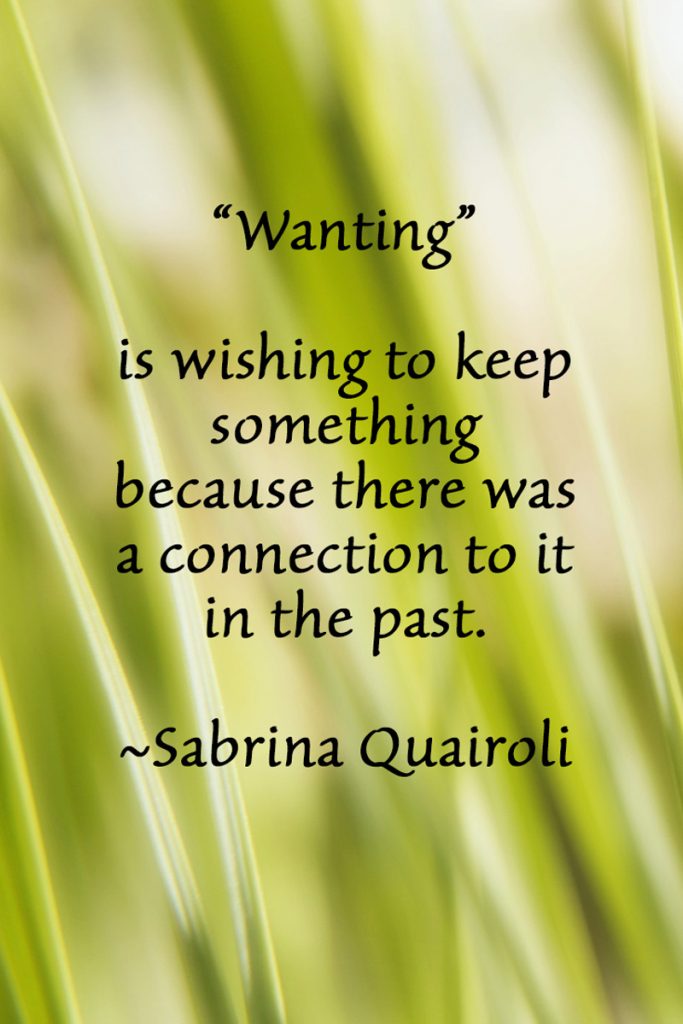
What is Needing?
Now, let's talk about needing and what that means.
“Needing” refers to items that you use today and will use in the future, such as appropriate-age books, clothing that fits or is a little larger for them, educational toys for their next phase of development, or a storage bin for loose toys and school supplies. These items are usually used right now but can also be stored for use in the near future. It can help them with daily activities, specific activities for different events, or special occasions.
Below are a few comments to help you explain why you would need an item.
- "These clothes and shoes (affiliate) are for when you are a little older. Your aunt/uncle gave them to us so you can use them."
- "These toys can be used when you learn how to ...."
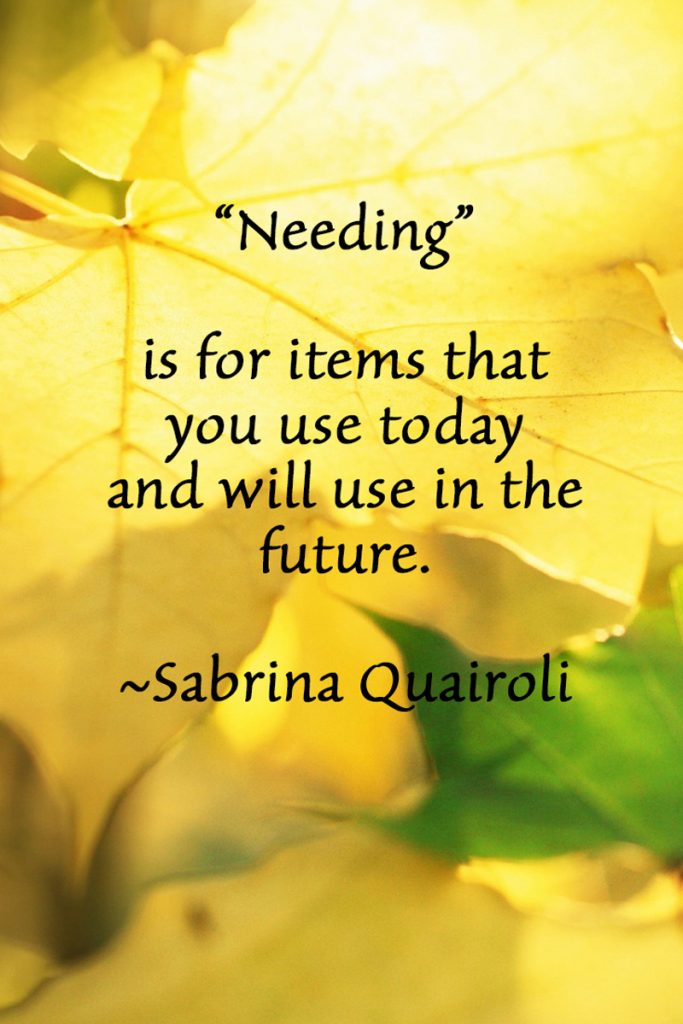
Questions to Ask Yourself Before Buying an Item
As parents, understanding the difference between needing and wanting may be challenging if we don't consciously try to do it ourselves daily. Children mimic what we do when they see it often. Making sure you understand your needs and wants is important. Before buying something, ask yourself these questions. Carry these questions with you and place them in your wallet (affiliate) to remind you to think before you unconsciously shop.
Questions to Ask Yourself
- Does the item I am about to buy satisfy a purpose?
- Am I replacing an item that broke?
- Do I have room for this item in my home?
- Does the child need this item for school, home, etc?
- Does this item have a use that will improve my life?
- Will I regret buying this item in a month/year/5 years?
- Why am I buying this item? Is it a reward? Am I feeling depressed?
- Can I afford to buy this item?
I hope these questions help you decide if the item is worth buying. Showing your kids your list of questions is one of the best ways to teach your child the good habits of purging old things and understanding their needs and wants. Explain to them that stores entice you to buy something you do not need. Making them aware of what they are doing will help you save money and space in your home.
As life changes, the new decluttered space and items must be reviewed and modified again. The organizing process should be a positive experience so they are willing to take responsibility for decluttering when they get older.
After all, organizing is an ongoing process that consistently needs to be changed depending on the situations and opportunities you experience in your life. That is the main reason I never get bored of organizing! The process always changes, and I can create new ways to organize the same space. Enjoy the change!
Visit our vast collection of kid organization posts to help you and your child organize different kid's rooms in your home.
Please note the links above are affiliate links through Amazon (affiliate). At no additional cost, I will receive affiliate fees if you click through and decide to make a purchase.
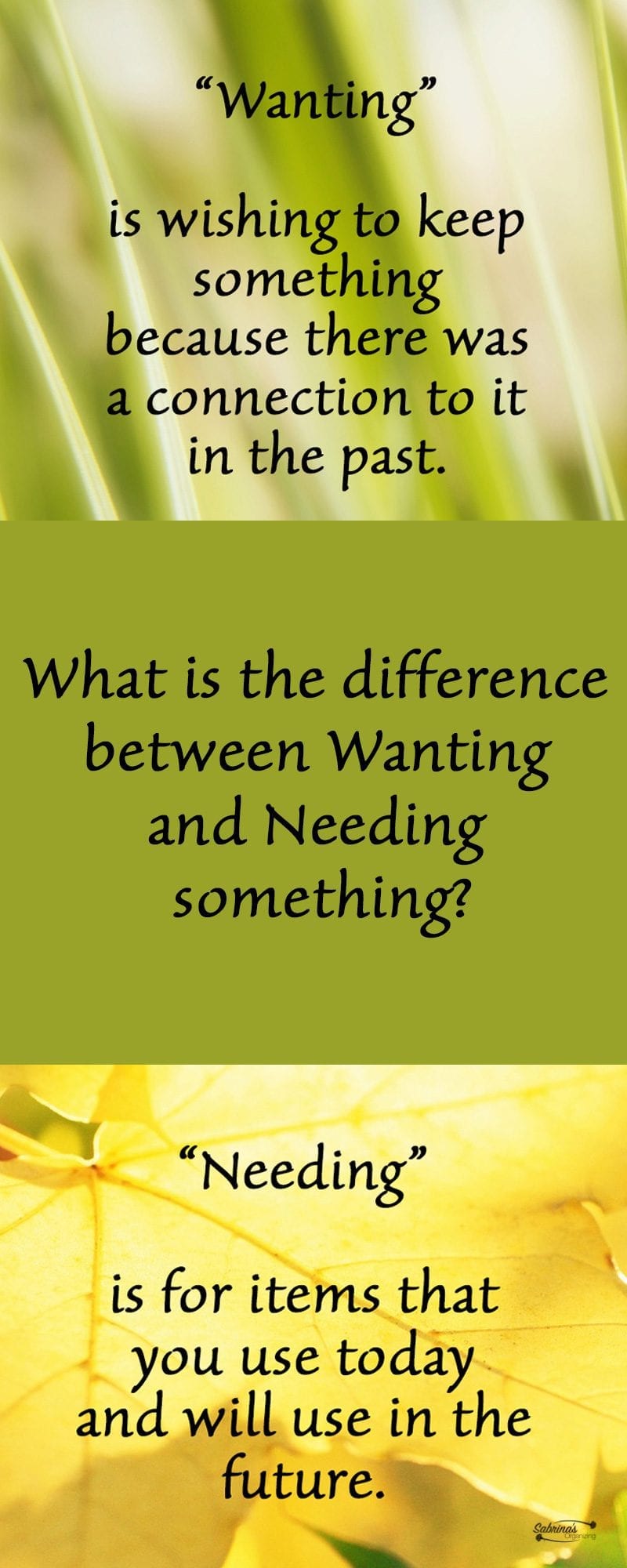

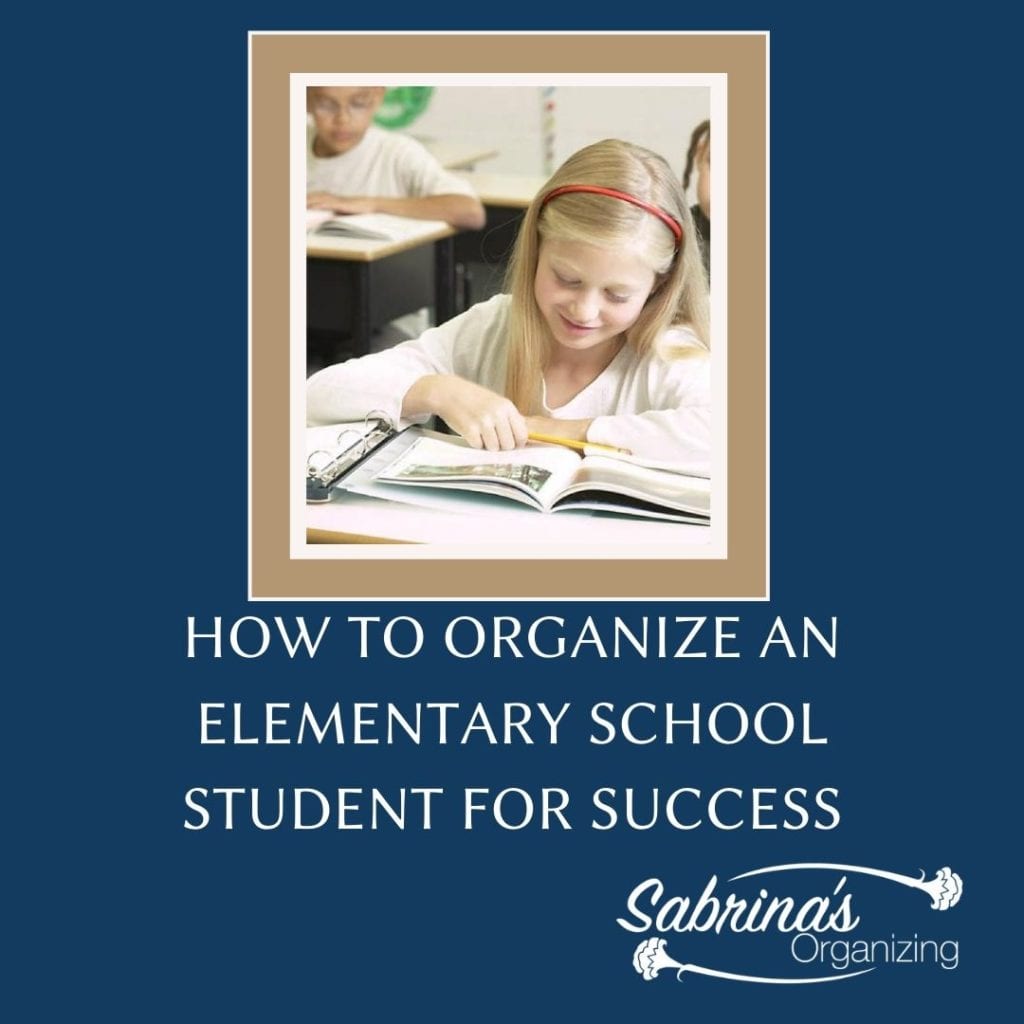
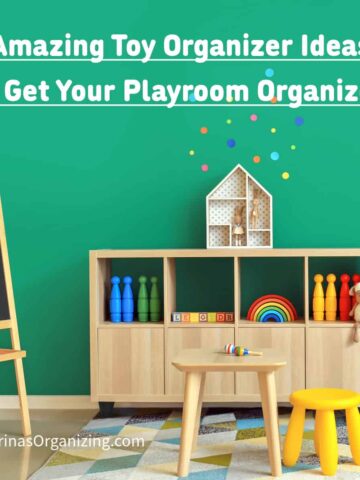

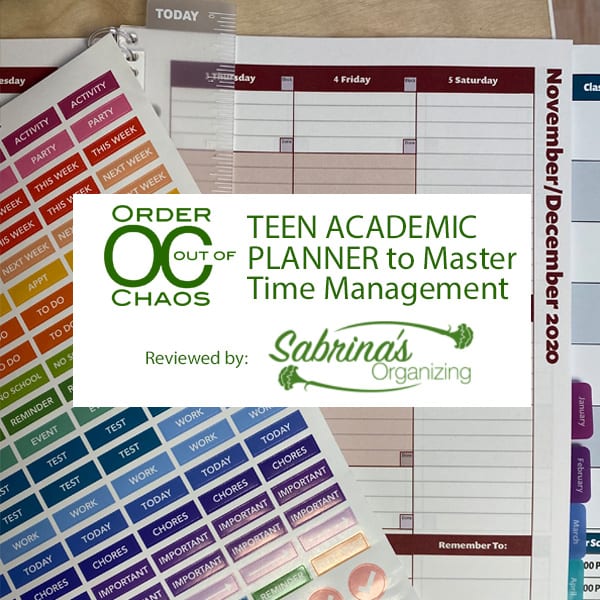

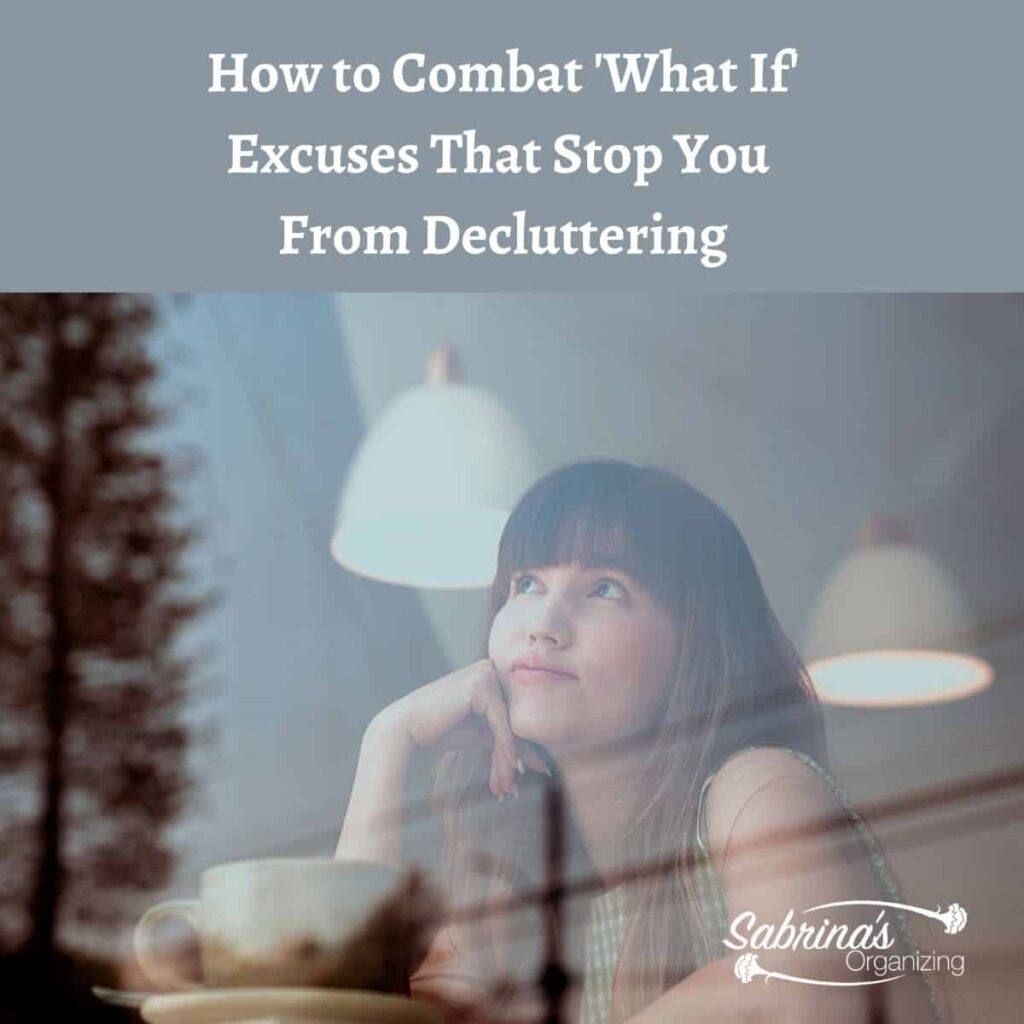


Jonda Sue Beattie says
Such an important topic. Teaching children the importance of letting go of what they no longer love is so important. My grandchildren recently visited, and I had pulled out the boxes of toys/books/art supplies that I keep for them. It had been over a year since their last visit, and I had added some new items to the boxes which were now pretty full. I asked the older child, Oliver, who is now 6, what items do you no longer enjoy that I could donate? He easily picked out two items that I put immediately in the donate box. I wondered about the bag of plastic animals. Were they still fun? On the first day they were ignored but on the next day they were taken outside to the carport where he had made different scenes with his chalk and the animals became part of the art project.
He has no problem letting go of books at a small trading box library near him as he exchanges them for other books.
Julie Bestry says
You've done a superb job spelling out all of the different elements of going through this activity to teach children how to declutter. Too often, I think parents make the error of decluttering without any input or interaction with their children. It might make the house tidier, but without a sense of agency over their possessions, children are likely to grow into adults who want to hold on to everything in order to insert their sense of control. Kids who haven't been taught these skills, even if they don't "mind" that their parents got rid of their stuff, won't necessarily be able to identify when, why, and how to go through the process. (It's like all those 20something boys who don't know how to cook or do laundry because their mommies always did it for them!)
I also think that parents overestimate children's emotional attachment to tangible things; I've had lots of parents say to their kids, "Oh, but don't you want to keep that? You liked it so much?" and their tweens roll their eyes and say, "Well, when I was a BABY I did." So there's managing kids' feelings, but parents have to be careful to manage their own feelings about their kids' stuff so as not to try to keep them small/young as represented by keeping the things from when they WERE small.
Super process!
Diane Quintana says
This is such an important topic, Sabrina. Teaching children that it's OK to remove things from their home is crucial. When children are accustomed to letting things go it's easier to accept that they don't need to hold on to all their belongings - just in case.
I love the questions you asked your son and the way in which you asked him to look at the different toys. Thinking about the last time they played with it and who may benefit from having this belonging.
Linda Samuels says
Helping your children learn how to edit and have confidence in their decision-making are excellent skills to develop. At the same time, you want to honor their input and wishes. Like everything, it takes time, patience, and practice.
We worked with our kids regularly, taking baby steps until they could edit and decide independently. In the early years, our editing sessions were shorter and less complicated. But as they got older, they could handle those decisions by themselves. As young adults, it's incredible to see them use those skills regularly with things, time, and so many other facets of their lives.
Seana Turner says
How wonderful to give some depth to the words wanting, needing, and wishing. In many ways, I think that decluttering for children is similar to doing so with adults. We have the same struggles. Adults tend to have a greater ability to separate out the emotion, and to use logic and a long term perspective. However, I think some people are just boring connecting more deeply to physical objects than others. In fact, I have often seen this difference in children: some who really struggle, and others who let go fairly easily.
I've used the "how much dust" question before as well. It's a good way to see what hasn't been used in a long time. The risk of pulling out any old toy is that it suddenly becomes more interesting again. At the same time, I have found that those toys often don't have "staying power." They are fun because they have a new novelty, but it wears off.
An incentive is a wonderful thing! I did this with my younger daughter, not for a new toy, but to go to a place she had been wanting to go. It was our reward for having decluttered her bedroom.
Great tips! Working with kids can be a pleasure. 12 bags of items to donate is amazing!
Janet Barclay says
I've never had occasion to go through this process with kids, but these are great questions. I wouldn't have thought of the amount of dust on an object being an indicator of non-use. Maybe that would be a good question for us adults too!
s says
This is really good, and I need to be better at this with my own things to be able to set an example. I have two children that are willing to let things go easily, which is a big help, but if they don't all want to let the toys go, it becomes a sensitive topic. I don't want to create a hoarder; so I have to be gentle and encouraging. This year we offered new open-ended and small creative toys if they gave away some less played with bulky items, and that helped.
Seana Turner says
12 bags? That was a pretty successful project. This question comes up all the time, and important to remember that there is a difference between a 2 year old and a 9 year old. Also, children are like adults in that they struggle with different items. Some are happy to shed stuffed animals but have a tough time with books, for example. Great to get this conversation going!
Sabrina says
Thanks for sharing, Seana! I totally agree. Each age is different. I haven't quite figured out the teenager conversation yet, but as soon as I do, I will be sure to share. =)